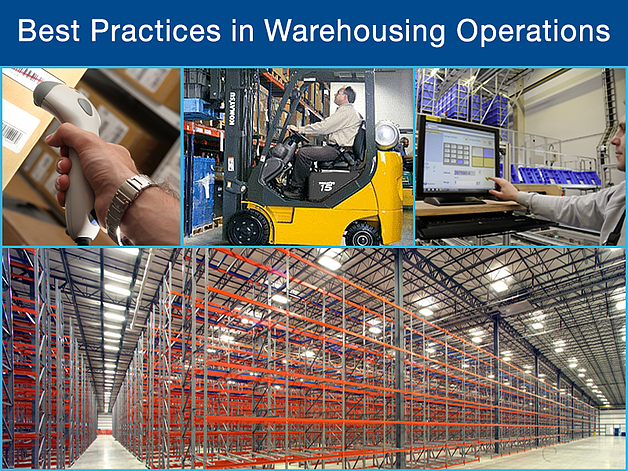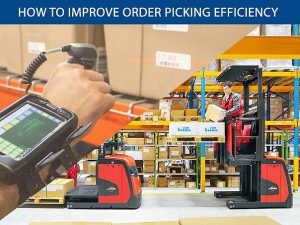In order to aim for world-class operations and have an edge over competitors, warehouse managers around the world follow best practices that ultimately reflect on their business’ bottom line, the health of its employees and a growing, loyal customer base.
Listed below are some of the most important warehouse operations best practices followed globally:
1. Efficient documentation at receiving:
Being the first place that inventory is received at the warehouse, the receiving dock is a critical spot in the warehouse operations. Complete logging of all shipping documents and receipts should be performed at this point.
2. Movement of inventory:
“Everything in its place and a place for everything”, just about sums up the principle behind efficient inventory management. Right after being received at the receiving dock, all inventory needs to be moved to the appropriate warehouse locations. Inventory that is not stored in the proper location can cause problems such as accidents, incorrect order picking, delay in order fulfilment and so on. A FIFO inventory system is best for ensuring that inventory remains current and also to reduce obsolete material in a warehouse.
3. Warehouse zones:
Depending upon the pick type, divide the warehouse into zones for swift and simplified order picking. Evaluate the zones and re-slot them as frequently as necessary for optimum speed and efficiency of order fulfilment.
4. Trained personnel:
All warehouse personnel, especially material handling equipment operators should be certified, license and evaluated for proficiency regularly. Whenever required, proper training should be provided to the employees.
5. Safety gear:
All necessary safety gear should be provided to the warehouse workers for their safety and health. They should be trained in proper use and care of the gear. No unnecessary activity should be permitted in the warehouse or on warehousing equipment.
6. Employee health:
The equipment and machines in the warehouse need to be ergonomically designed in order to reduce strain on backs and other body parts of the workers. The implementation of such measures will not only enhance the health and productivity of the workers, it will heighten the sense of employee loyalty, leading to lower attrition rates.
7. Security of inventory:
The security and integrity of the inventory stored in the warehouse can be strengthened by the correct storage racking systems and material handling equipment. Efficient layout and correct material storage systems go a long way in ensuring the security of inventory. Installation of energy-saving, location-appropriate lighting not only improves visibility and security, but also decreases risk of accidents, reduces picking errors, and saves on energy bills.
8. Lean operations:
With the growing popularity of Just-in-Time delivery, lean operations have become critical. As per this principle, it is must to keep aisles free of unwanted equipment and un-shelved inventory for faster movement, reducing the inventory stored in a warehouse and cross-train personnel for optimum cross-functionality.
9. Shipping:
The safekeeping of inventory from the warehouse till it is loaded on the transport vehicles is critical and can be ensured using restricted access to the loading dock as well as diligent documentation and logging of all shipped items.
10. Safety accessories:
The warehouse must be equipped with the following safety accessories to prevent damage to the racks and the SKUs. Some of the accessories also help to stabilize the racks and minimize the danger of racks/shelves collapsing and causing harm to workers.
- Column Guards: These protect against damage by forklift trucks bumping against the pallet racking uprights.
- Pallet back stopper: This feature prevents pallets from falling off the back of racks.
- Anti-collapse Mesh: This can be used to catch falling objects, to fence off restricted areas and so on.
- Locking Pins: These pins hold beams together at the connector points.
- Corner Protectors: Made of high-density polyethylene, these accessories prevent damage to corners due to forklifts, trucks and other vehicles.
These are just a few of the best practices adopted by highly productive warehouses across industries. According to your industry and your specific inventory needs, you can consider the best practices that are appropriate to your situation.
What is important to note is that safety and efficiency go hand-in-hand in the process of creating an efficient supply chain and logistics operations. Following the above best practices can be a good first step towards improving your productivity without compromising on employee safety.
If you would like to have an efficient and EN-conformed storage system in your warehouse or manufacturing facility or re-engineer the existing facility, write to us. We will get in touch with you soon.
You may visit our products page for more information about the entire range of products and services.
Thank you for reading our post. If you would like to read our regular posts, please ‘Follow us on Linkedin.




